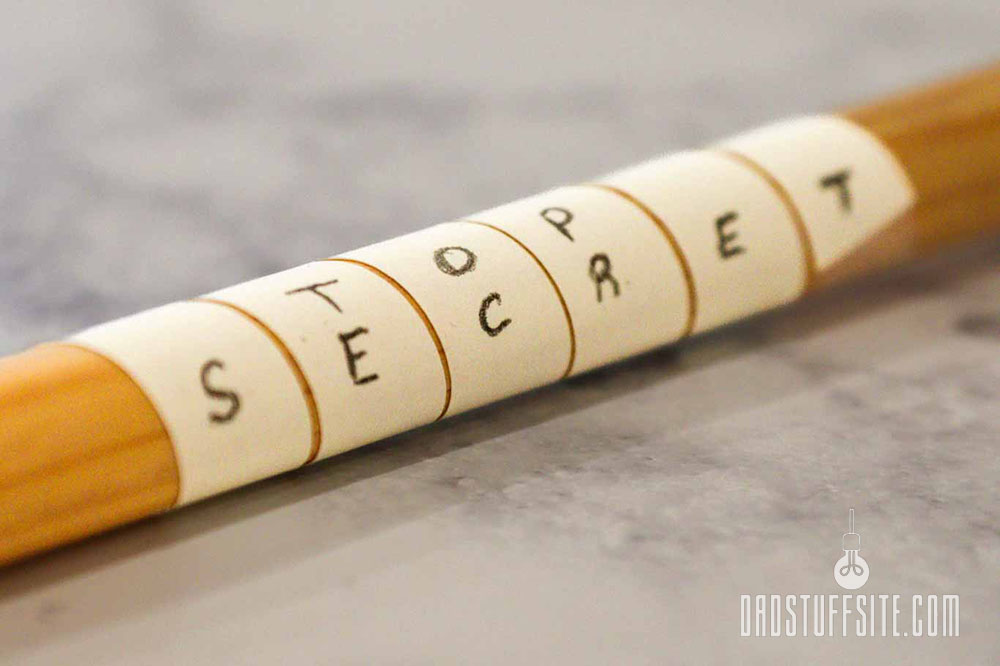
We may receive commissions from purchases made through links in this post, at no additional cost to you.
I love teaching my kids how to write secret codes and ciphers. I like that I can add an extra layer to their imagination and play. It’s not enough to play good guys and bad guys. Why not be a spy trying to send secret messages while undercover? Or the next time you need to prepare a surprise for Mother’s Day, you can communicate with your kids using secret messages.
While there are a lot of secret codes and ciphers out there, one of my favorites is the Scytale cipher. Not only is it super easy to encode and decode messages, but it’s also easy to teach little kids. In fact, this is one of the first ciphers you can teach your child. As long as they can read and write, they can use a Scytale cipher.
What is a Scytale Cipher?
A Scytale cipher is a transposition cipher encoded and decoded using a predetermined-sized cylinder. A strip of paper is wrapped around the cylinder with a message written across it. One letter is written on each portion of the paper with decoy letters to fill any empty spaces.
The scytale can be traced back to as early as the 7th century BC in Ancient Greece. The word “scytale” is from the Greek word σκυτάλη. It can be transliterated into “skytale, ” translating to baton or staff. It was a tool used for military communications between government leaders and commanders in the field of battle.
This article is originally from www.dadstuffsite.com

Before a military commander was sent to war, he was given a scytale, that is a baton, to communicate with government leaders. In this way, the scytale was used as a kind of military authentication stick as well as a cryptographic device. This also means the scytale might be one of history’s earliest known transposition ciphers.
A Scytale Cipher is a variation of a Rail Fence Cipher. To learn more, check out the Rail Fence Cipher (Fun Secret Code to Teach Your Kids).
How to Encode and Decode Messages Using a Scytale Cipher
A Scytale cipher is really a simple transposition cipher not very different from a Rail Fence Cipher. What makes it unique is the method by which you encode and decode messages. A cylinder does all the work. This is especially great for kids because they don’t need to learn any theory to encode and decode messages.
To begin, you need some sort of a cylinder (your scytale) and a strip of paper. You can make a scytale any size. It could be as small as a pencil or as big as an empty paper towel roll. A cylinder with a diameter between 1/2 and 1 inch works best. You can use something smaller, but it becomes a bit too small to be practical.
I recommend using the larger cylinders for younger kids (it’s easier for them to read and write the larger letters), and smaller ones for older kids.
This article is originally from www.dadstuffsite.com

You will also need a strip of paper that is long enough to wrap around your scytale at least 5 or 6 times. If you use a larger diameter cylinder, you will need a much longer strip of paper than a smaller diameter cylinder. You can either cut multiple strips of paper and tape them together to make a long strip, or you can buy some receipt paper online or at your nearest office supply store.
Looking for more secret codes to teach your kids? Try The Caesar Cipher (What it Is and How to Teach Your Kids).
For this demonstration, I’m using a ¾ inch dowel and a ½ inch-wide strip of paper cut from the long side (11 inches) of a piece of printer paper.
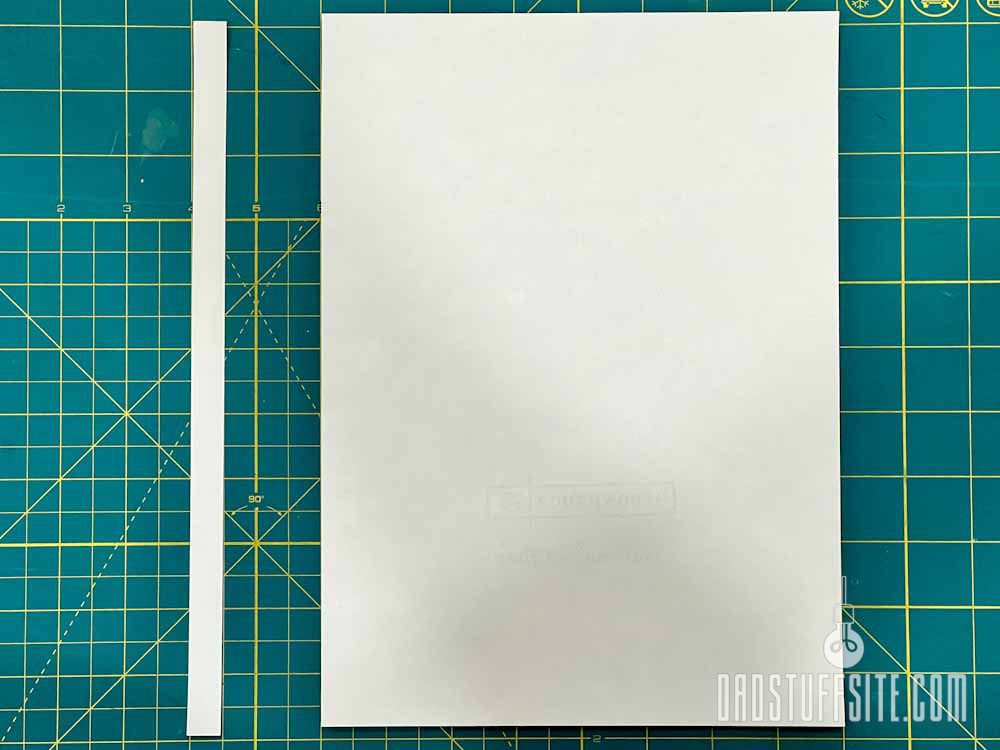
To encode using a scytale, begin by taping the end of the strip of paper to the dowel. Wrap the paper around the dowel at an angle so the paper doesn’t overlap.
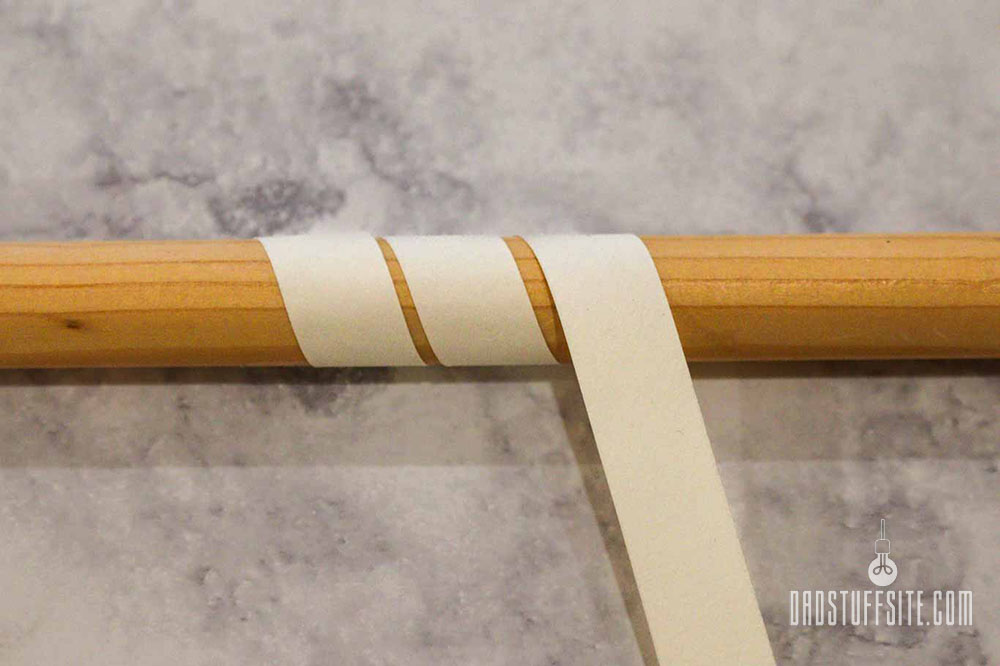
Write your message lengthwise across the dowel only writing one letter on each section of the paper. For this example, I’m going to write, “Tickle Mom at Bedtime.” Fill in any extra spaces with decoy letters.
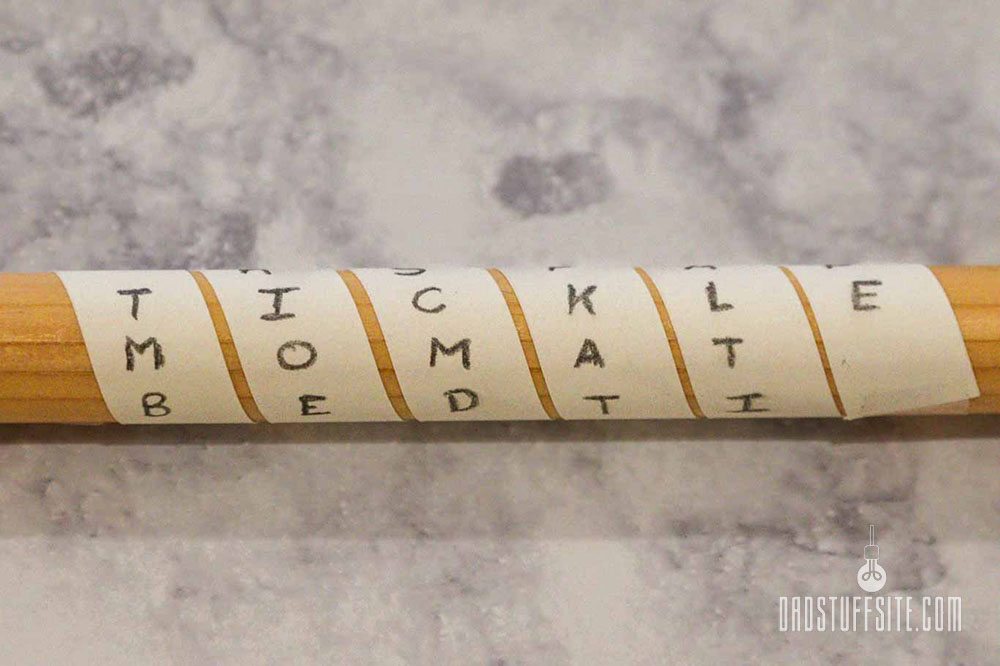
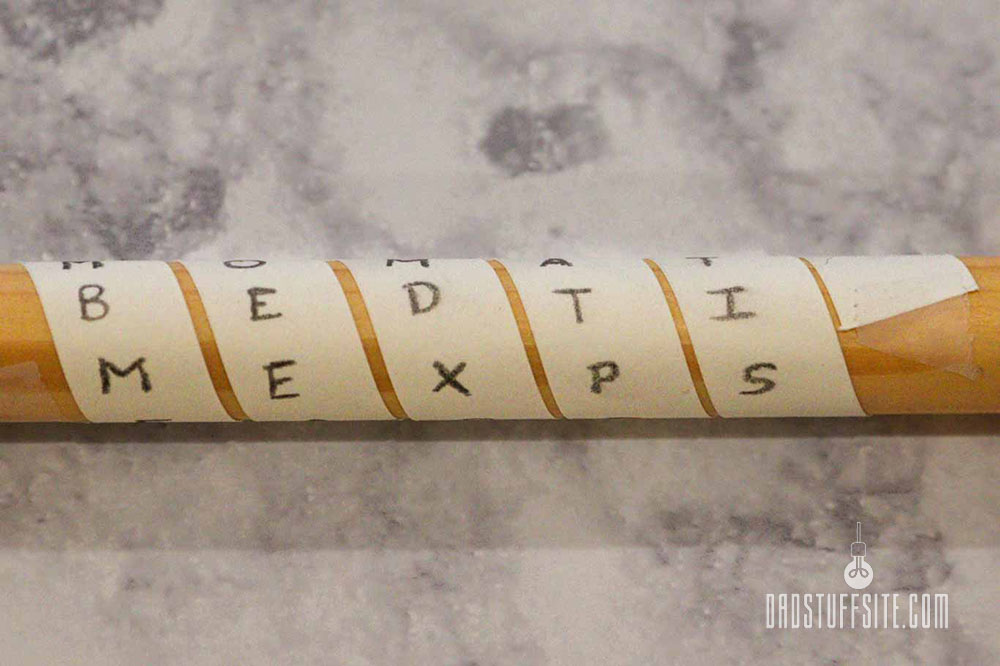
Unroll your message and deliver it to whomever you want to send your message to.

Decoding the message is just as easy. Simply roll the encoded message around a predetermined-sized cylinder and read the message.
For another fun and easy secret code, check out The Pigpen Cipher (What it Is and How to Teach Your Kids).
This article is originally from www.dadstuffsite.com
Scytale Cipher Activities (Plus a Free Worksheet)
So not that your kids know how to encode and decode a scytale cipher, what can we then do with it? Now’s when we need to create some activities for our kiddos to do with it (and this is when the fun really begins).
If you’re homeschooling your kids or just like the idea of printable worksheets, download the free pdf below. Not only will it explain everything to your kids, but the last page has a bunch of encoded messages they need to decode. (Just a heads up, you will need to get a piece of ½ inch PVC pipe to do the activity. You can pick up a 2-foot piece at your local hardware store for about $3-5.)
Learn more: 6 Secret Codes and Ciphers to Teach Young Kids
If you’re looking to be a little more creative, create a mini treasure hunt for your kids. I know my kids like to ask for snacks or their tech time. How about making them work for it a little? Simply hand an encoded message with a clue to the location of the next clue. After 4-5 clues, the last message can lead them to the location of their snack or to the updated password to open the family iPad.
If you’re looking to go big, try making an epic scytale cipher treasure hunt. I’ve done this before using the Caesar Cipher. Simply make all clues using a scytale cipher instead of a Caesar cipher (You can check out my Caesar Cipher Treasure Hunt here).
This article is originally from www.dadstuffsite.com
You might also like these Treasure Hunt activities:
- A Christmas Treasure Hunt (For the Whole Family)
- Ottendorf Treasure Hunt Activity to Do With Your Kids
- Become Penpals with an Alien (Pigpen Cipher Activity)
- Book Cipher Treasure Hunt Activity to Do with Your Kids
Related Posts
The Ottendorf Cipher (What it Is and How to Teach Your Kids)
It’s Friday night, which means it’s family movie night. On the roster for tonight’s entertainment: National Treasure. One of my favorite movies and the first time watching (of what I’m sure...
I’m constantly on the quest to find new things for my two little boys to do. Recently that has taken me on an epic deep dive into all things involving secret codes, ciphers, treasure hunts, escape...
